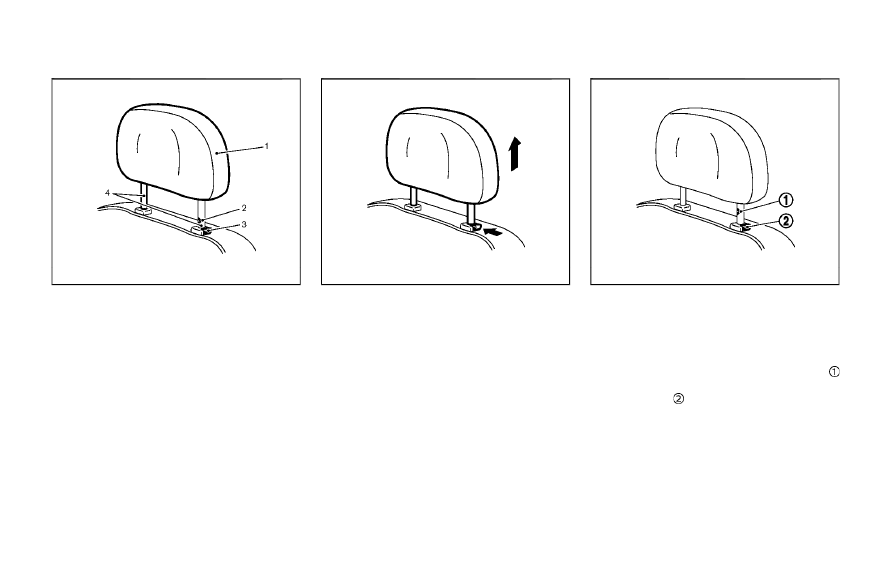Nissan Qashqai (2018 year). Instruction - part 2

1-8
Safety — Seats, seat belts and supplemental restraint system
JVR0203X
NON-ADJUSTABLE HEAD RE-
STRAINT/HEADREST COMPONENTS
1.
Removable head restraint/headrest
2. Single notch
3. Lock knob
4. Stalks
SSS1037
REMOVE
Use the following procedure to remove
the head restraint/headrest.
1.
Pull the head restraint/headrest up to
the highest position.
2. Push and hold the lock knob.
3. Remove the head restraint/headrest
from the seat.
4. Store the head restraint/headrest
properly in a secure place so it is not
loose in the vehicle.
5. Reinstall and properly adjust the head
restraint/headrest before an occu-
pant uses the seating position.
SSS1038
INSTALL
1.
Align the head restraint/headrest
stalks with the holes in the seat. Make
sure that the head restraint/headrest
is facing the correct direction. The
stalk with the adjustment notch
must be installed in the hole with the
lock knob
.
2. Push and hold the lock knob and push
the head restraint/headrest down.
3. Properly adjust the head restraint/
headrest before an occupant uses
the seating position.